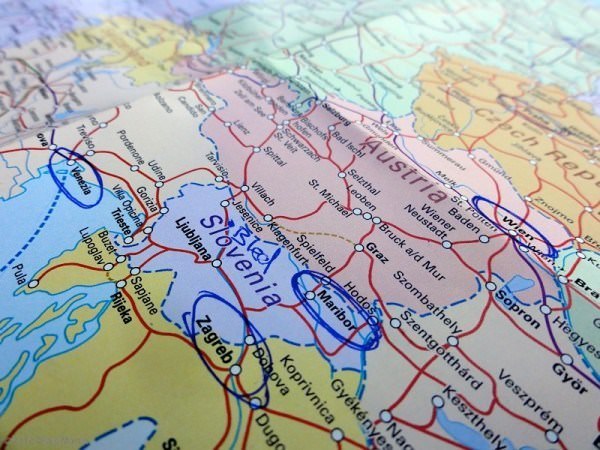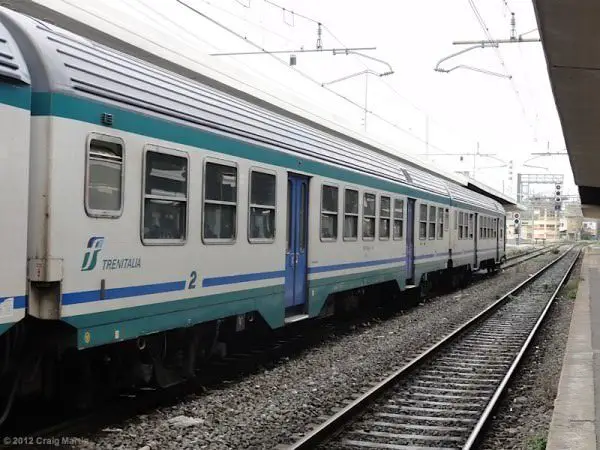Do I want a Eurail pass?
Europe’s fantastic rail networks mean that travelling by train is a great way to get around on the continent, and a Eurail pass could be a way to save money on tickets. But then again, it might not be worth the price — it all depends on how you’re travelling.
Where are you travelling?
Eurail passes tend to be great value in countries where train travel is expensive, notably Germany, Austria, Switzerland, France, and Scandinavia. If you plan to spend a lot of time in these areas, and especially if you’re travelling long distances or uncommon routes, the Eurail could save you a lot of cash. It’s not so valuable in countries like the Czech Republic, Italy, and Croatia, where train travel is cheap, nor in Spain, where almost every train journey requires a seat reservation — which you have to pay extra for.
Flexibility or price?
How flexible do you want to be while you’re travelling? If your travel dates are fixed and you know your exact itinerary, you might be able to pick up some cheap point-to-point tickets by booking online in advance. Even very long routes in Austria and Germany sometimes go on sale for as little as €19 — much less than the per-day price of a Eurail ticket. Of course, these tickets tend to be non-refundable and non-exchangeable, and you can only travel on the exact train you have tickets for, but it’s still a fantastic deal.
However, if you want to be able to change your plans at the last minute, a Eurail pass will allow you to do just that. You can stay longer in places you enjoy, leave earlier if a city doesn’t really catch you, and add or remove destinations as the fancy takes you.

Direct or not so direct?
One of the benefits of a Eurail pass is the fact that you can use as many trains as you like on the days when the pass is valid. So you can head somewhere for lunch, have afternoon tea somewhere else, and find somewhere to stay in your third or fourth location of the day. However, if you’re really more keen to just get to where you’re going, you might prefer a direct journey — which might be cheaper to buy over the counter.
So, how to choose?
First, consider how much time and money you have to visit Europe — a five-day whirlwind visit requires a different approach to a two-month stay.
Then sit down with a map and circle all the places you’d like to visit, and highlight places you’d like to stay for a night or a few nights. Download the Eurail map and use bahn.de to work out travel times between these cities, and work out how many travel days you’ll need — how many days will you be using the trains?

If you find that you have 30 places to visit and only 15 days to do it in, get a Eurail Global Continuous Pass that’s valid for 15 consecutive days, and go crazy — you’ll be exhausted at the end of the trip, but you’ll see a lot of Europe.
However, if you have a month or more and want to stay longer in each place, consider a Flexi Pass, where you have a certain number of travel days within a limited period of time, usually two months. If you’re going to be travelling in just one area of Europe, you might find that a one-country, two-country or regional pass is better value than a global pass, but a Global pass will give you maximum flexibility — you can go to any or all of the 23 countries it covers.
When looking at pass prices, divide the total price by the number of travel days you get to work out a per-day price, then do some research into how much it would cost to buy point to point tickets for the journeys you want to make: how much will they cost if you buy them in advance, and how much on the day. Use local train websites like Oebb for Austria, Trenitalia for Italy, SNCF for France, and bahn.de to find these prices, enter tomorrow’s date for an idea of an on-the-day price, and a date three months in the future for an indication of advance fares. These prices won’t necessarily be exactly what you should expect to pay, but they’ll give you a ballpark figure to work from.

You’ll probably find that most of the individual journeys cost more than the per-day price of your Eurail pass, which means you’re saving money if you use one on these routes. However, some trips will cost less than the per-day price, so you wouldn’t be getting value for money if you use the pass on these legs — so don’t. Buy a point-to-point ticket and keep your travel days for more-expensive journeys. You might find that you can get a ten-day pass rather than a 15-day one, and the money you didn’t spend on the five extra travel days could stretch to ten short trips. And maybe you can make use of those super-cheap advance fares as well as buying a Eurail pass, especially if the route in question is right at the beginning of your trip, when your plans aren’t as changeable.
Eurail passes are a great tool for getting around in Europe, but they aren’t a magical solution. You’ll get the best value for money by combining them with other ticket types and other forms of transport — you never know, maybe throwing a boat, bus, or plane trip into the mix will make your European journey that much better.
[box]You can buy Eurail passes online at ACPRail.com[/box]







